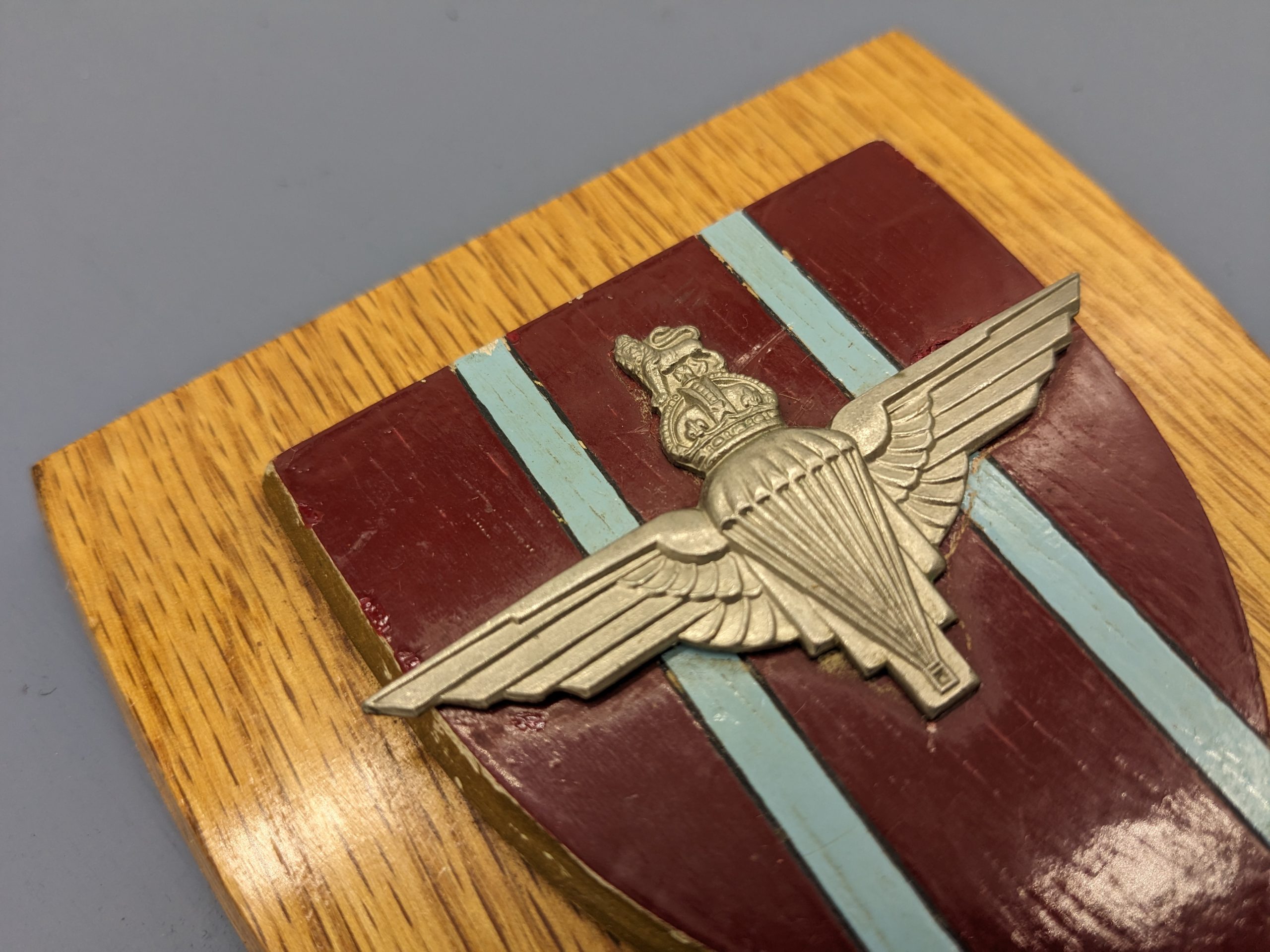Brass, Blood, and Berets: The Curious World of Military Cap Badges
Military cap badges are a funny thing. Small, easy to overlook, and yet they’re packed with history, pride, and meaning. Some people stumble into collecting them by accident — maybe their grandad gave them one as a kid, or they spotted a regiment’s emblem in a charity shop. And that’s all it takes. Because once you start paying attention to them, you realise they’re not just bits of brass — they’re symbols, stories, and in many cases, complete mysteries.
Small, Interesting, and Everywhere
Cap badges are appealing because they don’t take up much space, they’re relatively affordable to start with, and they’re incredibly varied. Every badge represents a regiment, and every regiment has a story. The symbolism is often rich — sometimes heraldic, sometimes absurd, and always rooted in pride. You might see a sphinx, a stag, a castle, or a flaming grenade — all of which mean something deep to the men who wore them.
People ask, why collect these things? Because each one is a fragment of history. A badge from the Gloucestershire Regiment isn’t just brass — it’s about two cap badges worn front and back of the headdress, a nod to fighting on two fronts at the Battle of Alexandria. That’s just one example. The more you learn, the more addictive it becomes.
A Shifting Landscape in Military Cap Badges – Styles and History
British cap badges have evolved. From the early days of regimental insignia on shakos and forage caps, to glengarry badges, to the standardised WWI patterns — it’s a journey through British military history in miniature. In WWI, badges were mainly brass. During WWII, economy measures led to plastic badges being issued (hated at the time, collectable now). Later still, Staybrite aluminium badges came in, widely disliked by collectors, but practical and popular with the modern squaddie, who could avoid the weekend ritual of polishing.
From hand-struck brass to mass-produced Staybrite, the story of British cap badges is also the story of war, empire, and military pragmatism.
The Trouble with Restrikes and Replicas
One of the more difficult areas in cap badge collecting is identifying restrikes and reproductions. And not everyone agrees. A badge might be dismissed by one collector and accepted by another, because at the end of the day, there’s a lot of grey area. Some badges were made in the field, in Middle Eastern bazaars or small workshops, wherever a Tommy could get one made. Some were gifted to children during wartime — a kind gesture from a soldier passing through town. Others are high-quality copies made decades later.
The point is: not everything is clear-cut. That doesn’t mean everything is fake — just that it takes a mix of experience, conversation, and common sense to work things out.
Reference books like Kipling and King are essential reading, but nothing replaces hands-on experience. Talking to other collectors is a good way to build knowledge. Just don’t be a know-it-all — be a teacher. That goes a long way.
A Collector’s Eye – What to Look For In Military Cap Badges
There are signs that can help:
- Construction: Two-part construction, solid feel, sharp detail. The quality of an original badge is usually obvious in the hand.
- Lugs and Sliders: Orientation of the lugs, the length and style of the slider — these often tell a story.
- Finish: Watch out for artificially aged badges. Brasso residue doesn’t make it genuine. A badge polished smooth through decades of use can be a better indicator.
- Rarity: The rarer the badge, the more likely it’s been copied. Rarity brings attention — and risk.
- Magnification: Some collectors use a loupe, even microscopes. A bit overkill for some, but under high magnification you’ll sometimes see casting flaws or surface softness that hint at a fake.
In the end, it comes down to experience. Every collector has had their fingers burnt at some point, even if they don’t talk about it. It’s part of the rite of passage.
Kids, Badges, and the Wartime Charm
Plenty of us started collecting from badges given to us as kids. Soldiers handing out spares during the war, kids asking for them in the street — it wasn’t unusual. These weren’t just souvenirs; they were starts of lifelong collections. I’ve had badges come through the shop with handwritten notes — from a Tommy to a schoolboy in 1942 — and they’re more valuable for the story than the metal.
A Nod to the Navy
I served in the Navy, and while we don’t get the variety of badges like the Army, there’s still a pride in that single anchor. Fewer options for collectors, maybe, but the stories still run deep. And who knows — maybe a badge worn in the trenches of the Western Front was struck from the hull of a dreadnought long since scrapped and forgotten. Stranger things have happened.
We Buy, We Sell, We Talk Badges
At The Vintage Window, we buy and sell military cap badges regularly. We’re always interested in good examples, and happy to chat with collectors of all levels. There’s a link to our current badges on the site. If you’ve got something to sell — whether it’s a shoebox full or just a single interesting piece — drop us a line.
And if you’re just starting out? Welcome to the rabbit hole. Just remember — it’s a world of opinions, and nobody has all the answers. But with a good eye, a few books, and a sense of humour, you’ll do just fine.
Badge collecting: where the devil’s in the detail, and the delight is in the hunt.

